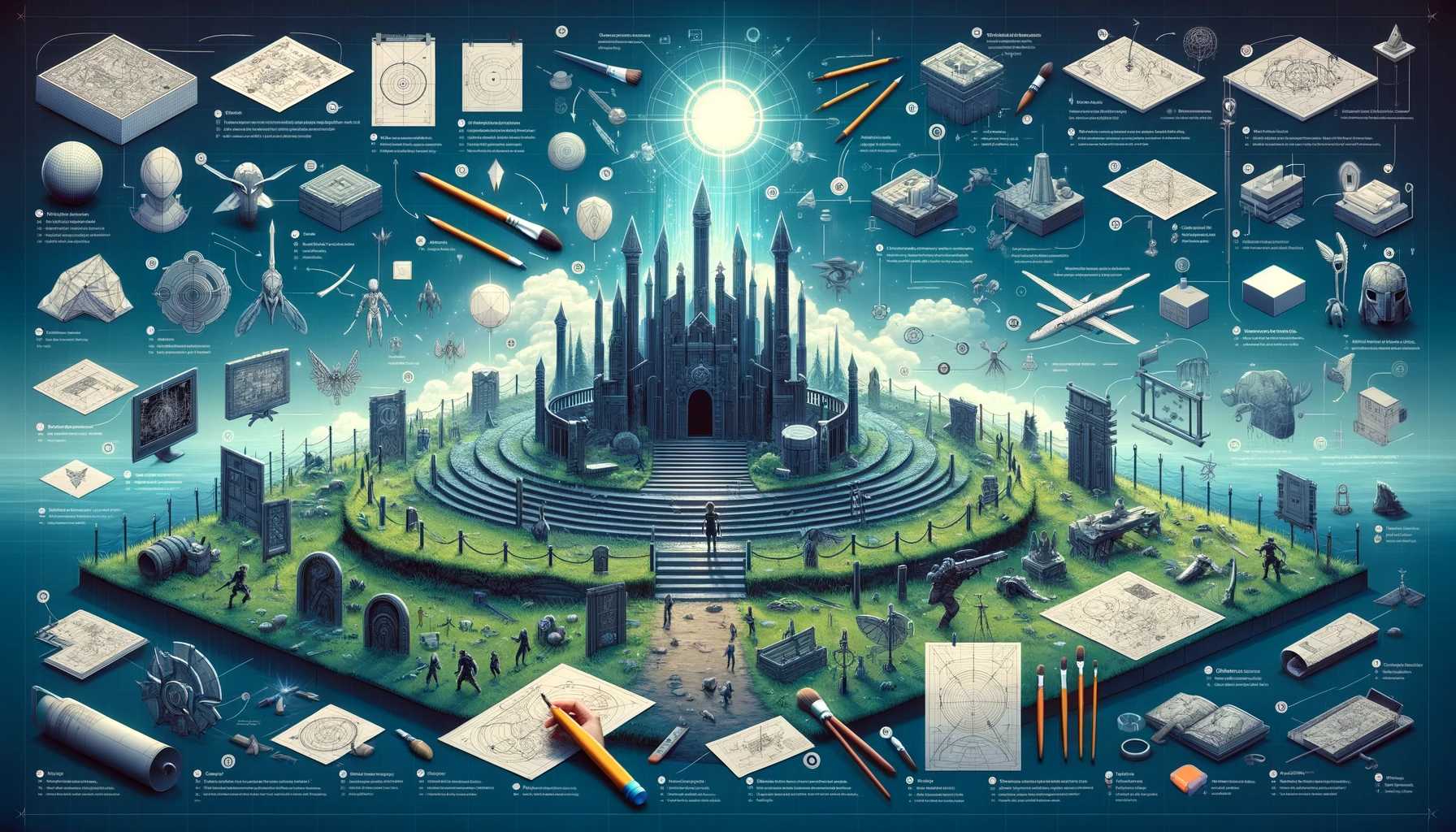Welcome, fellow game designers and aspiring artists, to the exciting world of game prop modeling! Whether you're crafting epic weapons, intricate furniture, or fantastical artifacts, prop modeling is a fundamental skill that can elevate your game design to new heights. Join me as we delve into the fundamentals of prop modeling, exploring techniques, tips, and best practices to help you create stunning props that bring your virtual worlds to life.
Understanding Game Prop Modeling
At its core, prop modeling involves the creation of 3D objects that populate the environments of video games. These objects can range from simple household items like chairs and tables to complex machinery, weapons, and magical artifacts. Regardless of their complexity, all props share a common purpose: to enhance the immersion and realism of the game world and contribute to the overall player experience.
Tools of the Trade
Before we dive into the nitty-gritty of prop modeling, let's familiarize ourselves with the essential tools of the trade. While there are many software packages available for 3D modeling, some of the most popular choices among game developers include:
Autodesk Maya: A powerful and versatile 3D modeling and animation software used by professionals across various industries, including game development.
Blender: An open-source 3D creation suite that offers robust modeling, texturing, and rendering capabilities, making it an ideal choice for indie developers and hobbyists.
ZBrush: A digital sculpting tool that specializes in high-detail organic modeling, perfect for creating lifelike characters and creatures.
Substance Painter: A texturing software that enables artists to create realistic materials and textures for their 3D models, enhancing visual fidelity and immersion.
Key Principles of Prop Modeling
Now that we're equipped with the right tools, let's explore some key principles of prop modeling that will help guide our creative process:
Reference Gathering: Before diving into modeling, it's essential to gather reference images and materials to inform your design. Whether it's real-world photographs, concept art, or mood boards, reference material will help ensure accuracy and authenticity in your prop designs.
Polygon Efficiency: When modeling props for games, it's crucial to optimize polygon count to maintain performance and efficiency. Focus on creating clean, efficient topology with a minimal number of polygons while preserving detail where it's needed most.
UV Unwrapping: Proper UV unwrapping is essential for applying textures to your models accurately. Take the time to unwrap your model's UVs efficiently, minimizing distortion and maximizing texture resolution for optimal visual quality.
Texture Detailing: Texturing plays a significant role in bringing your props to life. Experiment with different texturing techniques, such as painting, sculpting, and procedural generation, to add depth, detail, and realism to your models.
Tips for Success
Now that we have a solid foundation in prop modeling principles, let's explore some tips and best practices to help you succeed in your prop modeling endeavors:
Start Simple: If you're new to prop modeling, start with simple objects like boxes, cylinders, and spheres to familiarize yourself with the modeling tools and techniques. As you gain confidence and experience, gradually tackle more complex props.
Practice Regularly: Like any skill, prop modeling requires practice and repetition to master. Set aside time each day to work on modeling exercises, study tutorials, and experiment with new techniques to improve your skills continuously.
Seek Feedback: Don't be afraid to seek feedback from peers, mentors, and online communities. Sharing your work with others can provide valuable insights, constructive criticism, and inspiration for improvement.
Stay Inspired: Drawing inspiration from a variety of sources, including art books, movies, video games, and nature, can fuel your creativity and spark new ideas for prop designs. Keep a sketchbook handy to jot down ideas and concepts as they come to you.
Advanced Techniques
For those looking to take their prop modeling skills to the next level, here are a few advanced techniques to explore:
High-Poly Sculpting: Use software like ZBrush to create high-poly sculpted details for your props, adding intricate surface textures, wrinkles, and imperfections that enhance realism and visual fidelity.
PBR Texturing: Adopt a Physically Based Rendering (PBR) workflow to create realistic materials and textures for your props. Utilize software like Substance Painter to author PBR textures that accurately simulate the behavior of light in the game engine.
Modular Design: Embrace modular design principles to create reusable prop assets that can be assembled and combined to create larger, more complex environments. This approach streamlines workflow, improves asset management, and facilitates level design iteration.
Dynamic Props: Explore the possibilities of dynamic props that respond to player interactions or environmental changes. Incorporate physics simulations, animation, and scripting to create props that react realistically to player actions, adding depth and immersion to your game world.
Conclusion: Unlocking the Power of Prop Modeling
In conclusion, prop modeling is a foundational skill that plays a vital role in the creation of immersive, engaging game worlds. By mastering the principles, techniques, and best practices of prop modeling, you can bring your creative visions to life, captivating players and immersing them in rich, vibrant virtual environments.
So whether you're crafting ancient relics, futuristic gadgets, or mundane household objects, remember the power of prop modeling to shape the player experience and elevate your game design to new heights. With dedication, practice, and a passion for creativity, the possibilities are endless in the exciting world of game prop modeling.
